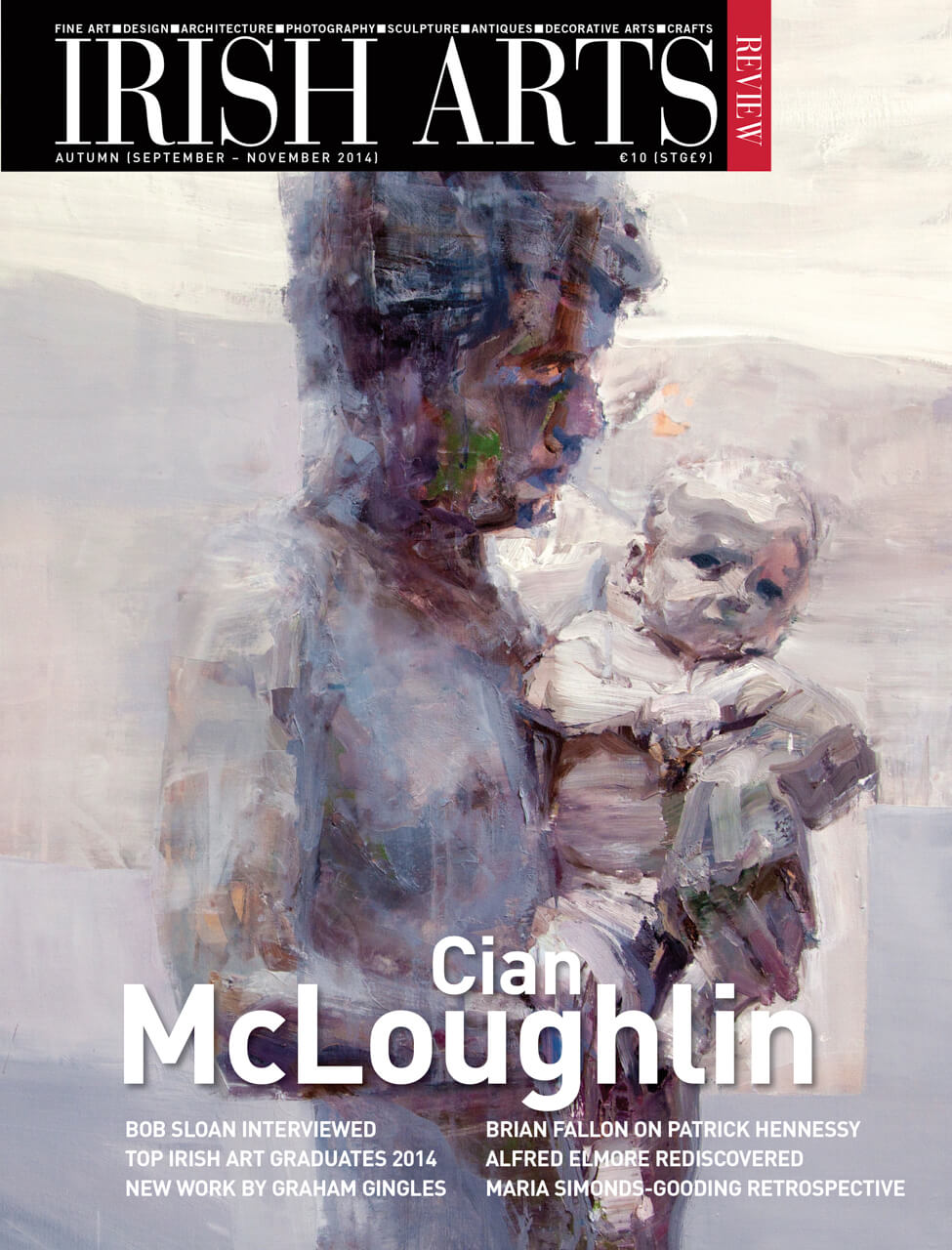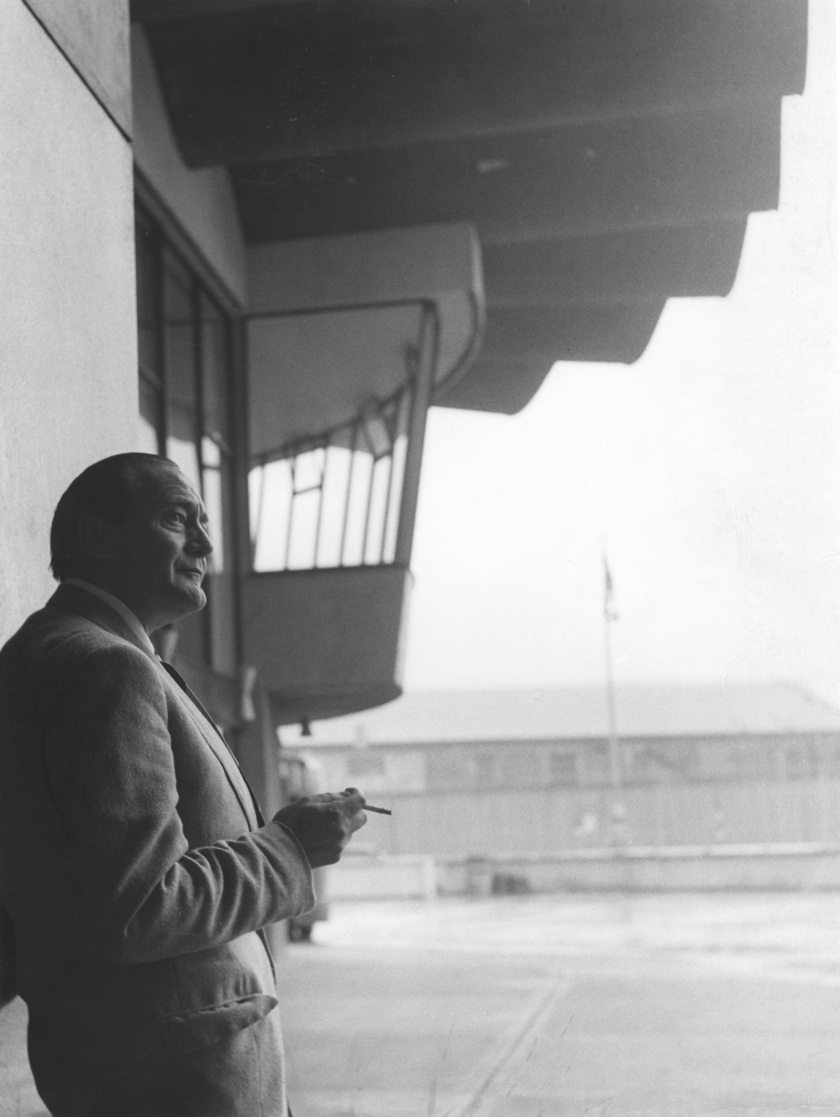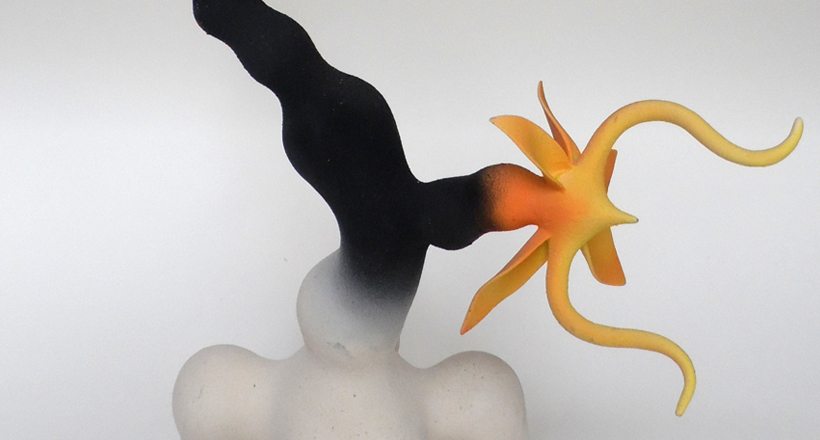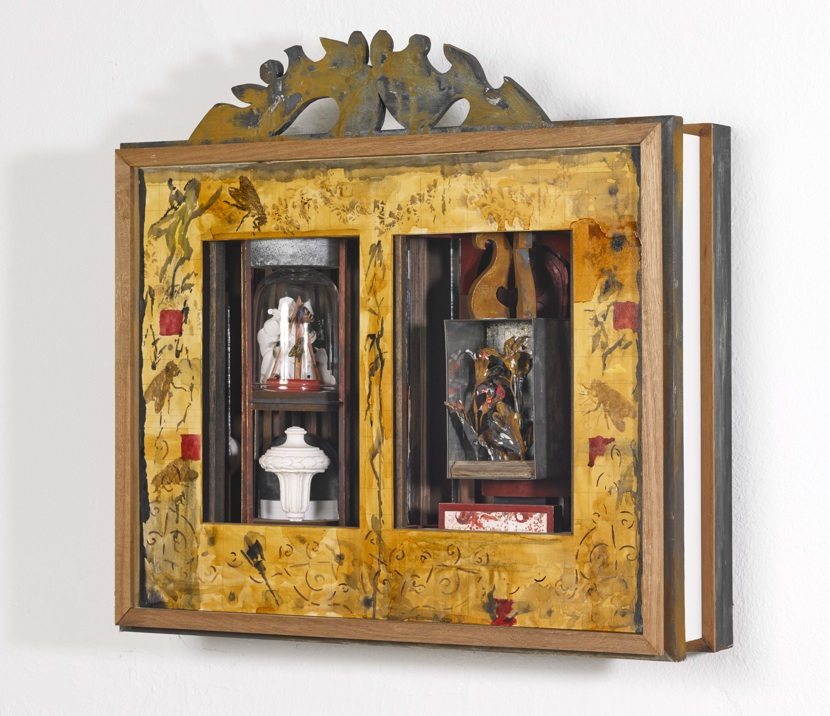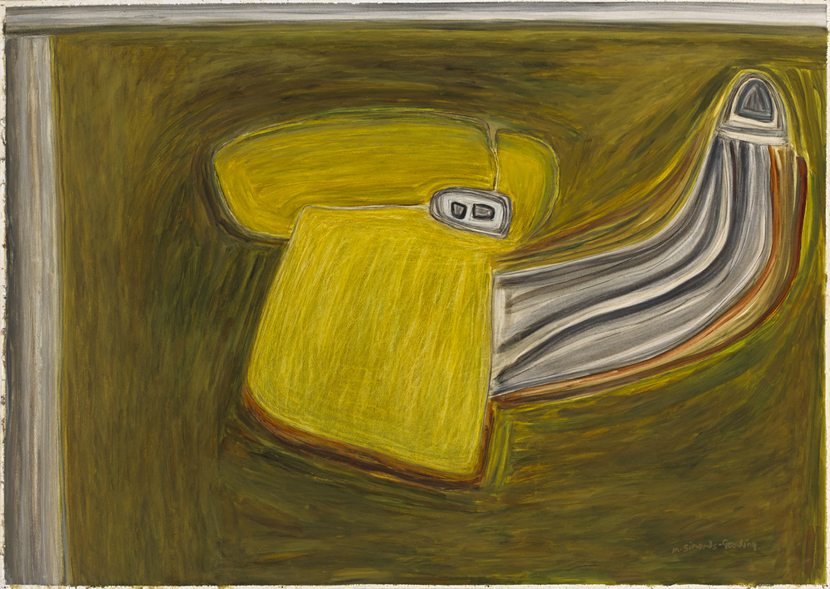
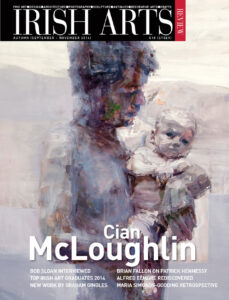
Catherine Marshall assesses the unwavering artistic journey of Maria Simonds-Gooding in advance of her retrospective in Dublin
Maria Simonds-Gooding’s artworks often look like maps and they unfailingly refer to the landscape and more especially to agriculture. They are monuments to mankind’s struggle to survive and claim a place in the natural world, but the farmer who made the enclosures or dug the water holes is as absent from her work as waterfalls are in the desert. Simonds-Gooding’s landscapes are occupied by humans by implication only. For all the references to the basic elements of agriculture, the human presence in her paintings, plaster and aluminium works is that of the artist herself and of her spiritual journeys in search of encircling, protective boundaries, water to feed her roots. Deeply private as she is, the artworks, like those of all great artists, offer the most direct route to her psyche and her creative drives.
The details of Simonds-Gooding’s biography have been told elsewhere (Marshall, ‘The Art of Reduction’, IAR, Autumn 2006, pp 80 -83, ‘√ìmos do Máire Mhaith’, IAR, Winter, 2010, pp 72, 73). It suffices to say that she was born in Quetta and moved to different parts of India with her Irish mother and English father before coming to live in Ireland when she was eight years old. All of her adult life has been spent in D√∫n Chaoin, just opposite the Blasket Islands, apart from a brief period of formal art education in Dublin, Brussels and Corsham in England and pioneering research trips, taken alone or with native guides to places as far afield as Bhutan, Sinai, India, the Greek island of Amorgos, Lanzarote, New Mexico, Mali, Tblisi. She returned each time to a 19th-century stone cottage, repaired with a wooden roof and door from an evacuated Blasket Island house, where she lives and works. Those forays outwards from the extreme edge of Europe, to other marginalized areas of four continents are not inspired by a desire to travel, so much as by a need to find protective boundaries that feel right to her. Never about the exotic or superficial differences between one peripheral culture and another, those journeys are driven instead, by a restless need to test the roots she has put down in D√∫n Chaoin against other time-defying patterns of human occupation. Living in direct visual proximity to the Blasket islands, on the edge of a larger island (Ireland) which in turn is loosely contained within the greater European landmass, she is aware of boundaries, citing the story of the islanders on Inis Mhicileáin building a wall on the island not to declare ownership of property but to protect a blind sheep from falling over the cliffs (Fig 5). Yvonne Scott has referred to her work as island-making, dealing with boundaries within boundaries, containers within containers, like Russian dolls. (Yvonne Scott, ‘The Art of Island-making’, in √ìmos do Máire Mhaith, Ionad an Bhlascaoid Mhór, D√∫n Chaoin, 2011, unpaginated).
In one of those extraordinary coincidences that seem like a message from the gods, Simonds-Gooding paid her first visit to D√∫n Chaoin on 16 June 1963. The 16th of June, lest anyone could forget, is also the day, nearly six decades earlier, on which James Joyce, left Dublin on another life-changing journey. From exile in Trieste, Joyce, in Ulysses, recreated his native city and in doing so, changed the course of English literature and exerted a powerful influence on Modernism. Speaking on Bloomsday 2014, Declan Kiberd spoke movingly about Ulysses as Joyce’s celebration of the ordinary man and woman, evoking their public spaces, their language, their voices, their thoughts, and the very ordinariness of Leopold Bloom when compared to his god-like, alter ego, Odysseus (Kiberd, lecture to the University Club, Stephen’s Green, 16/6/2014). Simonds-Gooding’s journeys to and from Kerry similarly search out the enduring power of ordinary human labour, deliberately by-passing the isolating glamour of the heroic as well as the minutiae of different folk traditions. The shape of a field whether it be in Bhutan or Dingle differs little, while the peripheral agricultural places her fields are located in, remote as they are from machinery and modern technology, reinforce the continuity and longevity of those practices. This is about essential human activity, without the distraction of history or the pettiness of nationalism. Returning from the trauma of the Trojan Wars, Odysseus cannot find his bearings. Seeing his old homeland he asks ‘what land and country is this‚Ķ. Am I on an island, or is this the seaboard of some continent?’ (Homer, Odyssey, Book 13, II. 232 -35). Simonds-Gooding’s artworks suggest that once we can secure the field and the shelter, nothing else matters.
Simonds-Gooding talks about discovering her roots in Dingle in the 1960s, and certainly, following completion of her art education at Bath Academy, Corsham, they drew her back there like a magnet (letter to the author, 27/5,2004). This is both surprising and revealing, since the artist was already in her mid-twenties before she paid her first visit to D√∫n Chaoin and almost thirty before she returned to settle there. What does it mean to ‘find your roots’ in a place you have never seen until you are twenty-four years old? It suggests a level of dis-association with previous locations, while the importance of the artist’s early memories of her Indian ayah (nurse) and communal farming practices in her ayah’s village gave her a level of security that the last days of the RAJ in India or her parent’s life in Ireland did not. Like Joyce’s Leopold Bloom, the heroes of her work are ordinary people, fishermen from West Kerry, shepherds and field-makers from everywhere.
Kathy Prendergast gave the title Enclosed Worlds in Open Space to one of her Body Map drawings which consciously or unconsciously raise questions about the manipulation and control of the female body. The title is a perfect fit for Maria Simonds-Gooding’s landscapes although unlike Prendergast’s Body Maps, her enclosures, habitations and shelters, are clearly defined as the reassuring, if hard-won, reward for struggle, in a sea of open space that is awesome and austere.
Sometimes, as in the early print works of the islands, that open space is the sea itself, with sheep and birds perched precipitously above it, sometimes it is pure and unmarked, offering no footholds or protection. The early works, such as Habitation, 1970, (IMMA) offer bird’s eye views of earthen constructions punctured by deep black holes. Later works were softened by colour and then, as the artist grew more secure in her practice, from the late 1970s to the end of the century, her landscapes are abstracted further through reduction to subtly textured and almost monochrome markings, where the shape is picked out from its plaster background in earthen colours drawn ultimately from the soil itself (Fig 6). Her deep connection to the earth is manifested through her use of natural materials, carefully sourced papers from India for her prints, wool (Fig 2, in the case of her tapestries), plaster made from sand and clay from the places she has visited. These materials reinforce that sense of connection to the landscape, giving expression to the land as it was, as Yeats’ put it, ‘before the world was made’ (WB Yeats, Before the World was made, from A Woman Young and Old, 1929).
It is only in the last decade that the artist has allowed herself the new freedom to venture away from that search for roots and look beyond them. The aluminium works, inspired by the printing plates on which she made large carborundum prints, take the artist and the viewer into a far less tangible domain. If it was not easy to find a foothold before in the boggy landscape paintings or the pristine open spaces of her plaster backgrounds, the new excitement in her work resides tantalisingly in shimmering, perpetually changing images that hover and float out from the aluminium. The magic of these ghostly paradigms is that they are like mirages in the desert, appearing and disappearing as a consequence of the light conditions around them.
Simonds-Gooding’s importance was recognized internationally almost before she became known at home, with shows in the 1970s and early 1980s at the Betty Parsons Gallery, New York and an interview with Barbara Walters on American television. Although collected by the Irish Museum of Modern Art, she was not as widely shown in Ireland as she deserved. Yet in 2011, her neighbours in D√∫n Chaoin, led by Eibhlín De Paor of √ödarás na Gaeltachta, honoured her with a retrospective exhibition, √ìmos do Máire Mhaith, at the Blasket Interpretative Centre as a belated celebration of her seventieth birthday, marking both her achievements as an artist and her commitment to the area. The RHA/Gallagher Gallery was approached in 2009, in the run up that exhibition to show it in Dublin. It is fitting that in her seventy-fifth year the RHA is finally giving her the larger retrospective she deserves, this time in a national setting, where the recognition previously awarded by international critics and her neighbours in the West Kerry Gaeltacht will be matched by that of her peers in the Irish artworld.
Maria Simonds-Gooding Retrospective, RHA, Dublin 6 September – 26 October;
Taylor Galleries, Dublin 16 October – 1 November 2014.
Catherine Marshall is co-editor of Art and Architecture of Ireland vol v (Yale/RIA) 2014.
